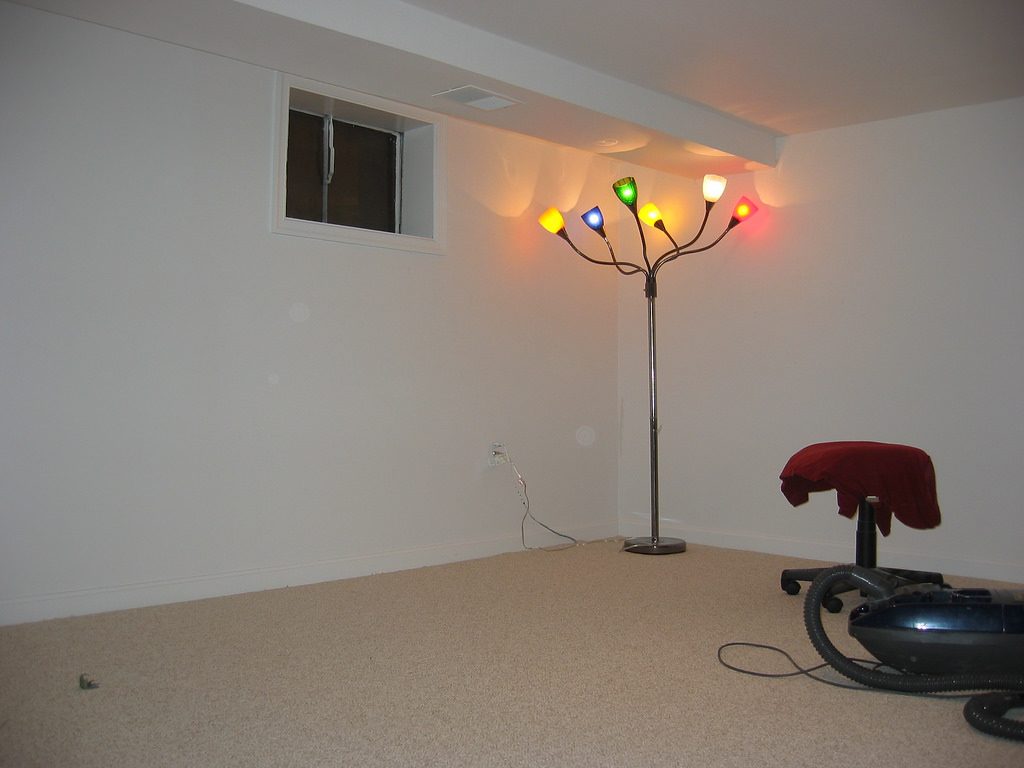Carpet can be a difficult flooring choice for basements given its natural ability to absorb water. But with the right guidance it is possible to have a comfy basement floor.
Below are 3 carpeting ideas for basements:

Image Source: Flickr
Qualities
Before discussing specific brand recommendations, following are basic qualities that make a carpet best-suited for basements:
- Low Pile. High-pile (thick) carpet takes a longer time to dry out, should it get wet. The lower the pile, the faster the drying process.
- Cut-Pile. Carpet is usually made of fiber loops that can be left “as-is,” cut, or combined loop and pile. Cut pile carpeting tends to be more durable and easier to extract water from, should the need arise.
- Pad-Less. While most people installing carpeting in basements are reluctant to give up the padding (it has the advantage of making the floor warmer), padding also acts as a sponge and traps water within and underneath it.
- Man-Made Materials. Carpet derived from organic materials (for instance, wool) will not stand up to moisture as effectively as man-made materials. Nylon, Olefin (polypropylene), and polyester are the most popular types of man-made carpet fibers.
- Sectioned. If you buy wall-to-wall carpeting and part of it gets so soaks that removal is necessary, the entire carpet must come out. But if you buy carpet squares, you can excise the water-logged part of the carpet with surgical precision. Not only that, carpet squares are a DIY-friendly install.
- Waterproof: Some carpets are considered waterproof because they have special backings that prevent moisture from passing through. Source: TheSpruce
Fibers
Along with carpet style, your choice of carpet fiber will influence the performance of your basement carpet. Consider carpet made from olefin face fiber. This product is very chemical-resistant in case you need to clean it with an aggressive cleaning solution (including bleach). Make sure the entire carpet is constructed of synthetic products only, not a jute-backed carpet. Jute backing is very similar to a potato sack, so you can guess how that would hold up to moisture. For all the possible problems associated with basement carpeting, the good news is that most basements aren’t exposed to direct sunlight. Many synthetic fibers fade under sunlight. If you’re able to keep moisture out of your basement, your carpet fibers should stay in good condition for many years. Source: HomeAdvisor
Dry Floor
For a dry, mold-free finished basement floor, always install a vapor barrier before laying a wood subfloor or carpet pad.
Any kind of persistent moisture will allow mold to get a foothold and soon ruin carpet or wood flooring. For below-grade slabs, assume that the concrete floor will get damp at some point. You then have two options, depending on your circumstances. And both of the options use the same layers of 1/2-in. plywood, carpet pad and carpet as shown. It’s the initial layer that differs.
Option B (in the photo) will work on a concrete floor that has no persistent dampness, seepage or leakage. The 6-mil layer of plastic helps to minimize potential moisture migration up into the plywood. Option A can be applied on concrete where there’s a higher risk of some dampness. The initial layer is a durable high-density polyethylene sheet or similar system that uses evenly spaced 3/8-in. tall dimples to create air space and a moisture barrier between the concrete and the plywood. Source: FamilyHandyman


